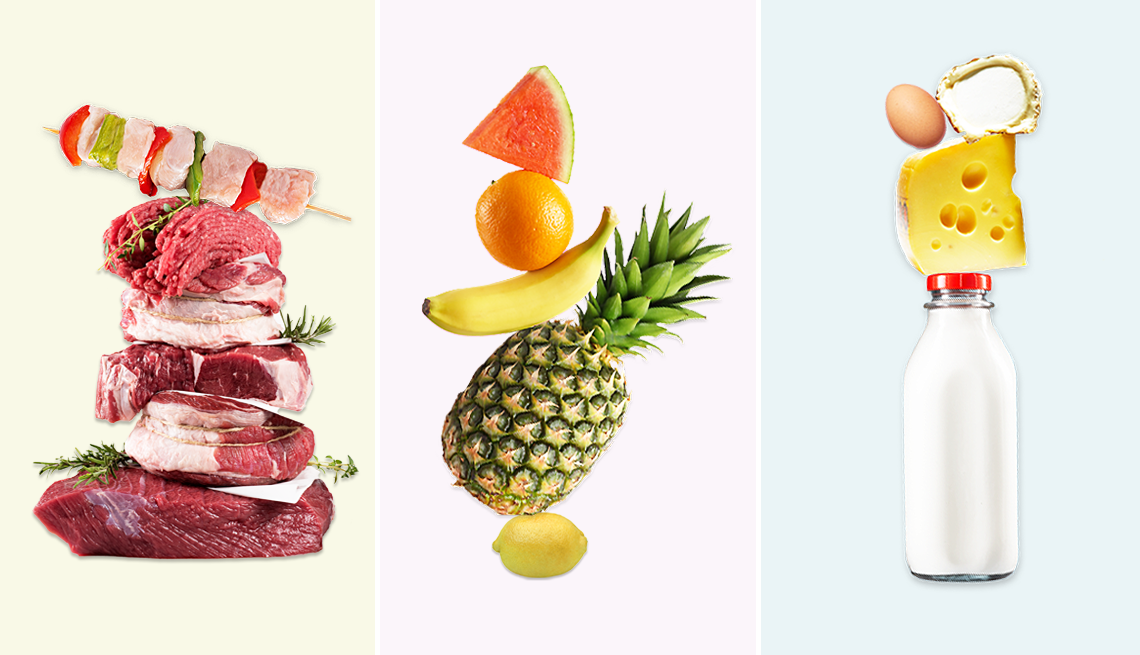Staying Fit


If you’re living with the uncomfortable symptoms of irritable bowel syndrome (IBS), you’re not alone. The American College of Gastroenterology estimates that 10 to 15 percent of adults in the United States live with IBS.
IBS is a common intestinal disorder affecting the gastrointestinal tract. Symptoms include constipation, gas, diarrhea, stomach pain and bloating. Many people with IBS have found relief in a diet designed to reduce their symptoms. Called the low-FODMAP diet, it’s an eating pattern that reduces and limits types of carbohydrates that can be hard for people to digest.


AARP Membership— $12 for your first year when you sign up for Automatic Renewal
Get instant access to members-only products and hundreds of discounts, a free second membership, and a subscription to AARP the Magazine.
In a 2021 analysis of studies on the use of the FODMAP diet for IBS, researchers found that it reduces symptoms by a moderate to large extent and improves quality of life.
“About 50 to 80 percent of people can improve or better manage their gut symptoms using the FODMAP diet,” says Emily Haller, a gastrointestinal dietitian, lifestyle and culinary medicine program coordinator and team member at Trinity Health Ann Arbor. Haller works with IBS patients to reduce symptoms by using the FODMAP diet.
Tips for starting a low-FODMAP diet
- Speak with your doctor before beginning a dietary program.
- Enlist the help of a qualified registered dietitian who has experience in the FODMAP diet.
- Prepare before starting. Block out time in your schedule for grocery shopping, cooking and rest.
- Keep a food journal. Listen to your body, and record changes in symptoms.
- Share your journey with a trusted friend or family member who can support and encourage you.
During the first phase of the diet, typically lasting two to six weeks, a patient eliminates high-FODMAP foods under the care of a registered dietitian with experience in GI issues. During this initial phase, the patient can observe whether removing these foods helps to reduce IBS symptoms. If so, phase two begins.
Phase two of the diet slowly reintroduces high-FODMAP foods systematically to test and recognize trigger foods.
The third phase creates a sustainable lifestyle combining low-FODMAP foods and nontriggering high-FODMAP foods the individual can tolerate. “There’s no benefit to avoiding FODMAPs if they’re not your trigger,” Haller says.
What is the FODMAP diet?
FODMAP is a group of fermentable, short-chain carbohydrates that some individuals with IBS, or irritable bowel syndrome, have difficulty digesting. The lack of specific enzymes in the small intestine can be why some people with IBS have difficulty digesting these foods.
The full name for the diet is a tongue-twisting list of those carbohydrates: fermentable oligosaccharides, disaccharides, monosaccharides and polyols — or the acronym FODMAP.
“These plant foods are all very nutrient-dense,” Haller says. “But they most certainly can be problematic for somebody with IBS.”
Fermentable foods are broken down by yeast or bacteria in our gut converting them into gases. This process is called fermentation. When the gas passes into the large intestine, it can cause pain and discomfort.
Oligosaccharides are prebiotic fibers from soluble plants, which beneficial bacteria in our gut feed on. However, these fibers can exacerbate symptoms for someone with IBS. Onions, garlic, beans, lentils, bananas, some nuts and wheat are all oligosaccharides.
Disaccharides are fermentable sugars found in lactose. Lactose intolerance is common and stems from an insufficient enzyme called lactase in the digestive system. According to the American College of Gastroenterology, 15 percent of adult Caucasians and 85 percent of adult African Americans have difficulty digesting lactose. Individuals of Asian, Hispanic or Native American descent and those of Jewish heritage also have high rates of lactose intolerance.
Monosaccharides are simple sugars commonly found in honey, fresh and dried fruit, processed breakfast cereals, sauces and flavored yogurts.
Polyols are in some fruits and vegetables. Examples are cauliflower, shiitake mushrooms, snow peas, apples, plums and watermelon. Artificial sweeteners such as sorbitol, mannitol, isomalt and xylitol contain polyols.
What foods trigger IBS?
Common IBS-trigger foods are gluten, lactose-containing dairy products, processed foods and alcohol.
Everyone has a unique microbiome and responds to food differently. The three-phase elimination process of the FODMAP diet will help you recognize which foods trigger your IBS symptoms.




































































More on Health
Why Do I Have IBS?
A look at some of the causes and solutions
Is it Belly Fat or Bloating?
7 ways to fight both
What Is the DASH Diet?
Research shows it can help to lower blood pressure, cholesterol
Recommended for You